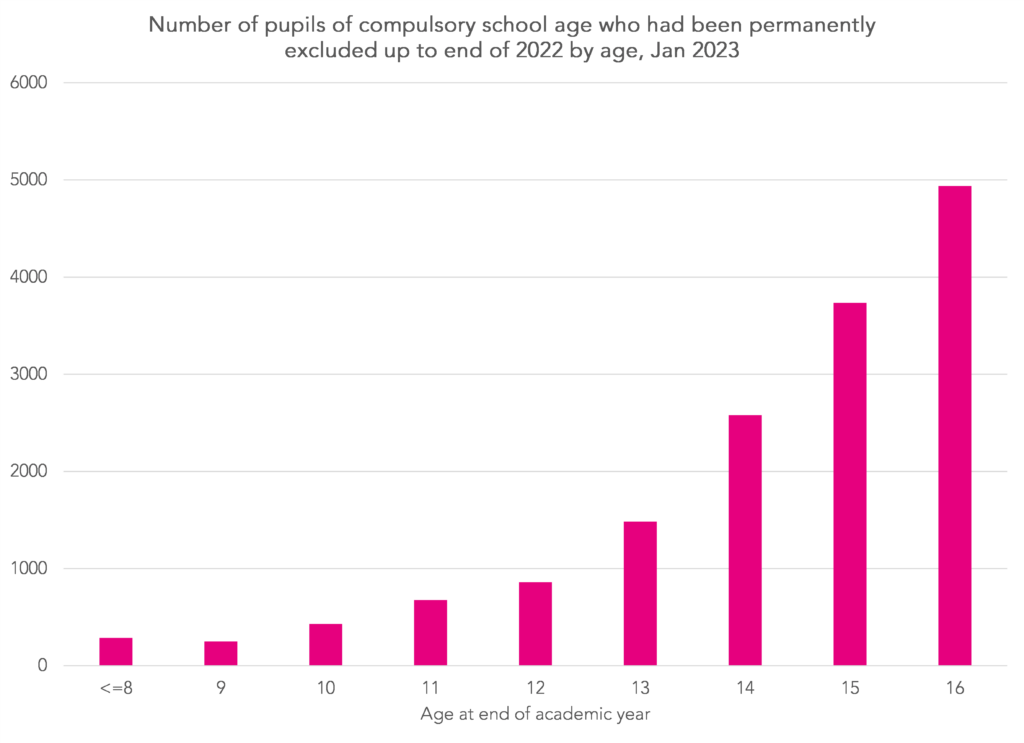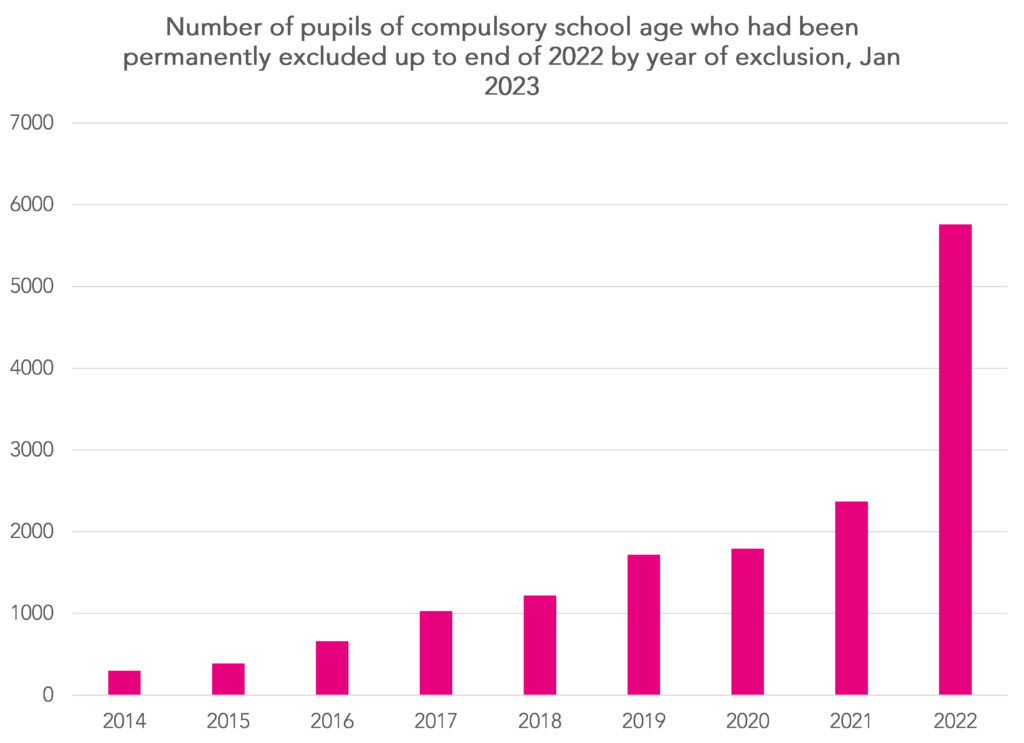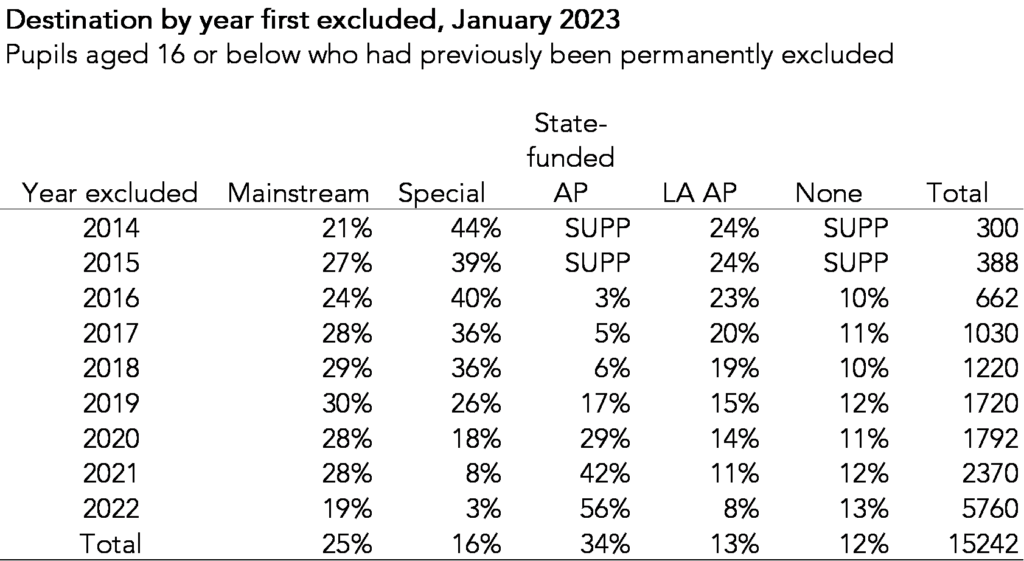In a previous post we examined the destinations of pupils who were permanently excluded in 2018/19 by examining the types of schools they were attending in subsequent years.
In this article, we return to this theme but this time address a slightly different question: in January 2023, where were all the pupils who had previously been permanently excluded up to the end of 2022?
How many were attending mainstream schools? How many were in alternative provision? How many seemed to be outside the state-funded education system in England?
Data
We use three datasets from the National Pupil Database (NPD):
- Termly School Census
- Annual Local Authority (LA) Alternative Provision (AP) Census
- Exclusions
We use data that for the period 2012 to 2023.
Using exclusions data, we identify all pupils who had been permanently excluded at some point in their school career up to the end of 2021/22, the most recent year of data available.
However, we wouldn’t expect all of them to still be in education in January 2023 (some of them would be in their late 20s by now). Consequently, we restrict our analysis to pupils who would have been aged 16 or under at the end of the 2022/23 academic year.
There is some slight under-reporting of exclusions in NPD due to the way they are collected[1].
We determine a destination for each excluded pupil using a combination of January School Census and the LA AP Census for 2023. These destinations are:
- State-funded mainstream schools
- State-funded special schools (including non-maintained special schools that complete School Census)
- State-funded alternative provision schools (including Pupil Referral units)
- Other alternative provision funded by local authorities outside the state-funded school sector (LA AP)
- No destination
The “no destination” group may include pupils who have moved outside England, will be in elective home education, are attending independent schools or, in rare cases, have died or are in custody.
Results
There were over 15,000 pupils aged 16 or below in 2022/23 who have previously been permanently excluded.
Over half were aged 15 or 16.
Over a third of the exclusions took place in 2021/22.
Now we turn to the type of provision attended by excluded pupils in January 2023. We provide this breakdown by both a) age and b) year of exclusion.
75% of excluded pupils were observed to be attending a state-funded school. 34% were attending AP schools, 25% mainstream schools and 16% special schools.
The remaining 25% were either in local authority alternative provision, including placements at independent schools and FE colleges as well as 1-2-1 tuition, or had no observed destination. These two groups were broadly similar in size overall.
Pupils who had been excluded more recently, and older pupils, were more likely to attend state-funded AP schools. Those excluded a longer time ago were more likely to be attending special schools or be in local authority alternative provision.
Summing up
Pupils who experience permanent exclusion are a small but vulnerable group.
The majority of the 15,000 pupils excluded at some point up to the end of the 2021/22 academic year (and who were still of compulsory school age) were enrolled in some form of educational provision in January 2023. 34% were attending state-funded AP schools.
However, 12% were not observed in any form of state-funded education.
- Exclusions are collected two terms in arrears. This means that they are not collected from schools that close in the intervening period.

Want to stay up-to-date with the latest research from FFT Education Datalab? Sign up to Datalab’s mailing list to get notifications about new blogposts, or to receive the team’s half-termly newsletter.










Interesting analysis, thank you. The pupils with a destination of LA AP, are these schools from the AP census that are not state-funded schools? So this could also include unregistered AP as well as independent schools and FE colleges?
Thanks Alison. Yes that is possible. I did something on this a while back https://ffteducationdatalab.org.uk/2022/06/how-many-children-are-in-unregistered-alternative-provision/
The shift away from special and towards AP is massive!